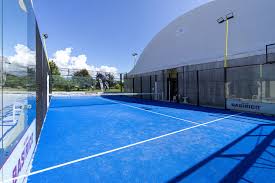

The Rise of Padel A Closer Look at Padel Ball Court Manufacturers
Padel, a racquet sport that combines elements of tennis and squash, has rapidly gained popularity worldwide since its inception in the 1960s. Characterized by its enclosed court and the use of solid rackets, padel offers a fun and engaging experience for players of all ages and skill levels. As demand for the sport continues to rise, the role of padel ball court manufacturers has become increasingly significant. This article explores the essential aspects of these manufacturers, their products, and the future of padel.
Understanding Padel Courts
A standard padel court is smaller than a tennis court, measuring 20 meters long and 10 meters wide. The court is enclosed on all sides, with the back walls often made of glass or solid material, allowing for unique gameplay dynamics as balls can bounce back off the walls. The surface is typically made from synthetic grass, providing durability and comfort for players.
Manufacturers of padel courts focus not only on the physical dimensions and material of the court but also on creating a versatile space that enhances the overall playing experience. This includes considerations for lighting, seating arrangements, and even spectator areas, making padel more accessible and enjoyable for both participants and fans.
Key Considerations for Padel Court Manufacturing
1. Quality of Materials One of the primary considerations in padel court manufacturing is the quality of materials used. Manufacturers select durable and weather-resistant materials to ensure the courts can withstand various environmental conditions. Additionally, the flooring must provide optimal grip and comfort to minimize injuries.
2. Customization Many padel court manufacturers offer customization options to cater to specific client needs. From choosing the size and type of surface to branding the courts with logos or colors, customization enhances the appeal for clubs and private entities looking to stand out.
3. Installation and Maintenance The installation process is crucial and requires skilled professionals to ensure that the court meets all safety and regulatory standards. Furthermore, regular maintenance is essential to preserving the court's quality over time. Manufacturers often provide maintenance services or guidelines for court operators.
4. Compliance with International Standards As padel grows in recognition, particularly with the International Padel Federation (FIP) taking charge, manufacturers must ensure that their courts are compliant with international standards. This involves adhering to specific regulations concerning the dimensions, materials, and overall construction of the courts.
The Market Landscape

The market for padel courts has expanded significantly over recent years, attracting a diverse range of manufacturers, from small local companies to large international enterprises. This increased competition has led to innovations in design and technology, improving the overall quality and appeal of the courts.
In Europe, countries like Spain have become hotspots for padel, resulting in numerous companies specializing in court manufacturing. Meanwhile, new entrants in North America and Asia are beginning to recognize the commercial potential of padel, providing fresh opportunities for manufacturers to capture this growing market.
Future Trends in Padel Court Manufacturing
As interest in padel continues to soar, several trends are likely to shape the future of padel court manufacturing
1. Eco-Friendly Materials In response to growing environmental concerns, manufacturers are increasingly focusing on sustainable materials and construction processes. Courts made from recyclable or sustainably sourced materials will become more prevalent.
2. Smart Technology Integration The integration of technology into sports is on the rise. Future courts may include features such as smart lighting systems, interactive scoring boards, and even augmented reality elements that enhance the game.
3. Global Expansion With padel's growing popularity in Asia and North America, manufacturers will need to adapt to different cultures and preferences, offering tailored solutions to meet the needs of diverse markets.
4. Rise of Indoor Padel Facilities As more organizations look to create indoor facilities to extend play regardless of weather conditions, manufacturers will increasingly focus on designing courts for enclosed spaces.
Conclusion
Padel is not merely a trend but a rapidly growing sport with a bright future. The work of padel ball court manufacturers is crucial in developing high-quality, innovative products that enhance the playing experience. As they navigate the evolving landscape of the sport, these manufacturers will undoubtedly play a foundational role in shaping the future of padel globally. Embracing new materials, technologies, and sustainable practices will be key to maintaining a competitive edge in this booming industry.
Premium Paddle Tennis Rackets for Every Court & Player
Premium Padel Courts: Expert Design & Installation Services
Premium Padel Courts: Panoramic Designs & Custom Builds
Premium Padel Court | Custom Designs & Quality Installation
Paddle Tennis Rackets: Unleash Power & Precision on Court
Best Paddle Tennis Rackets: Power, Control & Comfort